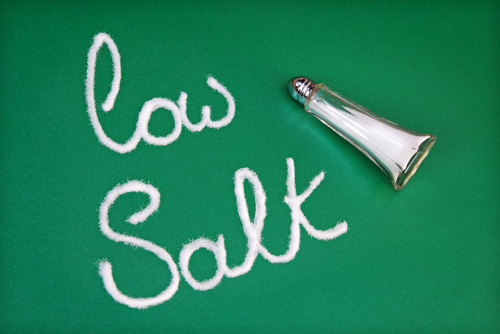Tips for Keeping a Pulmonary Hypertension-Friendly, Low-Sodium Diet

Many people living with Pulmonary Hypertension are on a no- to low-sodium diet. But trying to keep to such a diet can be very challenging, and create obstacles for dining with friends, even for preparing your own meals.
People with PH are advised to maintain a low-sodium diet because salt can cause water retention. The volume of blood that your heart has to pump increases when too much water is stored in your tissues, making a diet high in sodium dangerous for people with PH. Hearts with PH are generally working overtime, which is why a low-sodium diet is so important.
You should always talk to your healthcare provider and PH specialist about your diet. Your doctor will be able to advise how many mg of sodium you can consume per meal/per day, which will differ from person to person.
Below are some general tips I have learned for navigating on a low-sodium diet.
1. Tips for Eating at a Friend’s House
If you are invited over for a meal at a friend’s or family member’s house, be sure to discuss your dietary needs with them ahead of time. At first I found this difficult, and felt like a major pain. But I quickly realized that although PH is unique, having dietary restrictions are not.
- If you are going over for a meal at another person’s house, you can always offer to bring a meal for yourself. That way, hosts aren’t obligated to create something special for you, and neither one of you will miss out on the bonding that happens over a nice meal.
- Eat a snack or meal before heading out for dinner. If friends are serving salad before dinner, you can always snack on that and bring or make your own dressing if they do not have a low-sodium salad dressing available.
- You can offer to come over after dinner for tea and dessert if it will be a longer dinner party.
- Don’t be afraid to bring your own condiments or whatever you need to ensure you have a meal that is safe for you.
2. Tips for Dining at a Restaurant
When dining at a restaurant, be sure to let your server know that you cannot have salt in your meal. It is always easier to add a pinch of salt for flavoring, than to try and take salt out of an already prepared dinner. I find that many places also over-salt food, making it risky to eat prepared meals regularly.
When I go out to eat, I explain that I cannot have salt due to a very serious heart issue. I say this because I look healthy and, because of this, servers and chefs do not always take my request seriously. Again, it can feel a little strange explaining this, but I have gone out with friends who have celiac disease or are vegan, and they also have to make special requests. Failure to make a request understood has resulted in a few episodes where my heart felt like it was trying to self-destruct. Not fun.
- Be sure to ask what the chef would recommend for your request.
- Fine dining restaurants and cafés that serve food made from fresh produce will be able to better accommodate your needs than a fast-food chain.
- Some places will be happy to make something off-menu for you. Your best bet is to get a protein that isn’t seasoned ahead of time, along with some veggies.
- Ask for pre-made sauces with salt to be served on the side. (This way, you have better portion control of how much salt you consume.)
Interested in PH research? Check out our forums and join the conversation!
3. Tips for Preparing your Own Meals
Salt is hidden in everything, from butter to broth. Below are some tips for creating meals that will fit your sodium-restricted diet. Preparing food can be tiring and taxing, especially for those of us living with a chronic illness. Don’t be afraid to ask for help if needed. Take advantage of those days you feel well enough to cook, and freeze leftovers that can be heated up for a day where you don’t have as much energy.
- If you are making your own meal, be sure to stay clear of recipes that require a lot prepackaged items. An example would be a curry recipe that calls for a pre-made jar of curry sauce for butter chicken.
- Look for a recipe that will actually instruct you on how to make the curry sauce. You can alter any recipe as needed. Omit the salt completely, and substitute low- to no-sodium products for products the recipe calls for.
- Avoid prepackaged foods and meals as much as possible, as they will contain more sodium.
- Always try to use products that contain either no or low sodium, such as no-sodium broth and butter.
If you find that your meal is a little bland, there are several companies that make low- to no-sodium seasonings and sauces. One company you will be able to find anywhere is Mrs. Dash , which offers salt-free seasonings and marinades. Another, called Mr. Spice, creates organic, no-sodium marinades and sauces. Some super markets also offer their own brands of low- or no-sodium cooking products, such as broth.
Note: Pulmonary Hypertension News is strictly a news and information website about the disease. It does not provide medical advice, diagnosis, or treatment. This content is not intended to be a substitute for professional medical advice, diagnosis, or treatment. Always seek the advice of your physician or other qualified health provider with any questions you may have regarding a medical condition. Never disregard professional medical advice or delay in seeking it because of something you have read on this website. The opinions expressed in this blog article are not those of Pulmonary Hypertension News, or its parent company, BioNews Services, and are intended to spark discussion about issues pertaining to PH.







